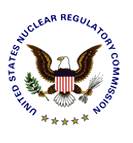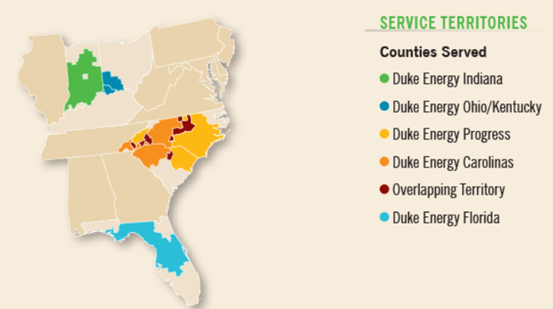- Duke Energy Plans Replacement of Coal Plant with SMR
- Virginia Data Centers to be Powered by SMRs
- Saskatchewan to Get $74M from Ottawa for SMRs
- NRC Suspends Selected US Nuclear Exports to China
- DOE Funds $112 Million for Computational Projects in Fusion Energy Sciences
Duke Energy Plans Replacement of Coal Plant with SMR
(NucNet contributed to this report) In a classic case of seeking new lamps for old, Duke Energy (NYSE:DUK) is rubbing the bottle of the nuclear genie by making two wishes for new small modular reactors (SMRs). The utility’s plans represent the first commitment to new nuclear generating capacity since the collapse of the so-called “nuclear renaissance” over a decade ago.
Duke Energy announced plans last week for deployment of two small modular nuclear reactors (SMRs) to replace currently operating coal fired units. The first site will be the Belews Creek in North Carolina. The second site hasn’t been chosen yet. The two-unit Bewlews Creek plant also uses natural gas.
The choice of two SMRs are the first new nuclear reactor projects to get ink in the utility’s Integrated Resource Plan (IRP) is a major policy reversal of its decision making. It follows actions taken a decade ago of cancelling six full size nuclear reactor projects. None of the planned and now cancelled or suspended AP1000s projects ever broke ground. Each of them would have represented about 1100 MW of carbon emission free electric generation capacity. The plants were Levy County, FL, Shearon Harris, NC, and William States Lee, SC.
Duke’s decisions to cancel or suspend the six reactors were driven by a combination of falling natural gas prices, stagnant demand for electricity, and the complexity of different utility regulations and rate structures for the states in its service territory.
Natural gas prices fell from a high of $16.13 in May 2008, which is when the rush to build new reactors began, to a low of $2.09 in February 2016 which is when the so-called “nuclear renaissance” for all intents and purposes came to an end.
Timelines for New SMRs
The timeline for the new SMRs to enter revenue service, according to the IRP, is more than a decade away in 2034. Duke said it plans to choose an SMR technology for the Belews Creek site between 2023 and 2025 and to apply for an early site permit (ESP) from the US Nuclear Regulatory Commission in mid-2025. If granted by the NRC, the ESP would be good for 20 years.
The projected in-service date for the Belews Creek SMR would be the first quarter of 2034, with the SMR at the second site coming online in the first quarter of 2035. Duke Energy plans to end coal-fired power generation at Belews Creek by 2036.
Basis for Site Selection
According to a report in Business North Carolina, the proposal comes because the site has the land, infrastructure and workforce that Duke needs, and because Stokes County and the surrounding community “is reliant on [the] tax base” associated with the Belews Creek facility. The two unit plant has a switchyard, connections to the regional grid, local transportation access, and an available labor force.
Complying with Emission Mandates Over Time
 The new-build plans are part of an update to Duke Energy’s 2022 integrated resource plan as the utility aims to comply with North Carolina’s emission mandates.
The new-build plans are part of an update to Duke Energy’s 2022 integrated resource plan as the utility aims to comply with North Carolina’s emission mandates.
That 2021 law requires utilities to reduce carbon dioxide emissions by 70% by 2030, compared with 2005 levels. The law also calls for net-zero emissions by 2050. In the updated plan, Duke Energy offered three scenarios that would get the company to 70% by 2030, 2033 or 2035.
The utility prefers the 2035 timeline. By that year Duke Energy is proposing to add 600 MW of capacity from two SMR sites, with both sites being the same reactor technology.
“Advanced nuclear will provide significant operational flexibility that will be needed to support increased deployment of renewable energy resources,” the utility said.
While Belews Creek would be retrofitted for new nuclear, Duke’s Roxboro and Marshall coal-fired plants would shift to natural gas. Duke says those combustion turbine plants would be able to blend hydrogen for electricity.
License Extensions for Operating Nuclear Plants
Duke Energy already operates 11 nuclear units at six sites in North Carolina and South Carolina. The six sites are Brunswick, McGuire, Catawba, Oconee, Harris and Robinson. It said it is also in the process of seeking 20-year license extensions for all 11 existing nuclear units.
At market close on Friday August 18, 2023, Duke stock closed at $91/share against a 52-week range of $84-$113. Market cap was $70.3 billion.
& & &
Virginia Data Centers to be Powered by SMRs
- IP3 and Green Energy Partners sign Agreement to Jointly Pursue Green Data Center Facility and Surry Green Energy Center
- Companies agree to pursue clean, green energy projects by establishing the Surry Green Energy Center in Virginia.
 IP3 Corporation (IP3) and Green Energy Partners, LLC (GEP) agreed to jointly pursue clean, green energy projects by establishing the Surry Green Energy Center, LLC to implement innovative commercial plans targeting baseload and industrial energy needs in Virginia.
IP3 Corporation (IP3) and Green Energy Partners, LLC (GEP) agreed to jointly pursue clean, green energy projects by establishing the Surry Green Energy Center, LLC to implement innovative commercial plans targeting baseload and industrial energy needs in Virginia.
The project features a land acquisition plan for green data centers, with future options to build carbon free hydrogen and nuclear energy production facilities.
The Surry Green Energy Center will be a new data center hub powered by carbon-free green energy and from small-modular reactors (SMRs) on-site. The project includes a fleet of four-to-six SMRs powering 20-30 data centers, generating hydrogen fuel, and providing backup power for Virginia’s grid. The Surry Green Energy Center will expand Virginia’s data center capacity and offset escalating power demands.
The project’s management did not indicate a choice for a reactor design, power rating, or other details of the SMRs it has planned for the center. Also, the team did not cite a timeline for develop, outside investors, or the EPC to build the plants. It isn’t clear whether the hydrogen to be generated by the SMRs will be used in the natural gas plants. The use of hydrogen in natural gas plants is usually a mix of just 20% hydrogen and the rest natural gas. Green Energy Partners has over time invested in solar projects which may be one of the green energy sources to be built as part of this one.
“Virginia’s data centers process over 70% of the world’s internet data and the need for data storage and handling is growing exponentially,” IP3 said. “These data centers also consume about 25% of Virginia’s energy, powered today by carbon-based fuels.”
Strategically located in Surry County, Virginia, 50 miles southeast of Richmond, VA, the joint IP3-GEP project will supply digital infrastructure and future power supply services to government agencies and military bases across the Washington, DC, to Norfolk, VA region.
IP3 will provide project development, financial structuring, and funding solutions in a phased approach. The joint agreement addresses inception, development, financing, and operations that will attract private capital and cutting-edge energy companies to Virginia.
IP3 is a developer and integrator of nuclear energy program in coordination with its wholly-owned subsidiary, Allied Nuclear Partners. Green Energy Partners LLC of Virginia (GEP) is a property and project development company.
& & &
Saskatchewan to Get $74M from Ottawa for SMRs
- A final decision on whether to build a small modular reactor in the province is expected in 2029
Canada’s Minister of Energy and Natural Resources Jonathan Wilkinson said last week the government has approved $74 million for development of small modular reactors (SMRs) in Saskatchewan. The money will be used for planning and feasibility studies. Actual construction of SMRs in the province will require a number with two more zeros after it.
The plan is to help fuel the transition to net-zero emissions and meet the federal government’s climate goals by transitioning toward non-emitting energy, Wilkinson said.

Canada’s CBC News Service reported that a final decision on whether to build a SMR in Saskatchewan won’t happen until 2029 but the planning process has been moving ahead with SaskPower put in charge of development and implementation in the province.
The GE-Hitachi BWRX-300 is the reactor identified in the CBC report for development in the province. That’s the same model chosen by Ontario Power Generation, which has been closely working with SaskPower on the project.
According to the CBC report, SaskPower has identified Estevan, located in the province’s southeast, and Elbow, located about midway between Saskatoon and Regina, as two sites that could potentially host SMRs. Both are close to water sources, existing power transmission infrastructure and have the ability to support a workforce, according to an announcement released last year by SaskPower. A final decision on the location to build one SMR is not expected until late 2024. If approved, construction could begin as early as 2030 with the first SMR coming on line sometime in 2034.
& & &
NRC Suspends Selected US Nuclear Exports to China
(NucNet)  The Nuclear Regulatory Commission has suspended a general license that had authorized exports of a number of items for nuclear-related uses to China. The export license suspension covers, “special nuclear material, source material, and deuterium for nuclear end use to the People’s Republic of China.” (Federal Register Notice)
The Nuclear Regulatory Commission has suspended a general license that had authorized exports of a number of items for nuclear-related uses to China. The export license suspension covers, “special nuclear material, source material, and deuterium for nuclear end use to the People’s Republic of China.” (Federal Register Notice)
The NRC said the order is part of a larger determination within the US government that more oversight and control of exports of these materials is necessary to further the national security interests of the US.
Under the order, which is effective immediately, any person wishing to export special nuclear material, source material, or deuterium to China must apply for, and receive, a specific license.
The result is that exporters now must obtain a license to ship to China items that are part of the “balance of plant” of a nuclear facility. Balance of plant is a term generally used to refer to all the supporting components and auxiliary systems of a power plant needed to deliver the energy, other than the generating unit itself.
In a related move, the US has expanded the scope of its nuclear-related export controls on China and Macau, a special administrative region of China, by establishing additional nuclear nonproliferation controls and license requirements for items that could “contribute to nuclear activities of concern”.
The Department of Commerce’s Bureau of Industry and Security said that the action, effective August 11th, was taken in response to China’s military modernization and nuclear force expansion. The items covered by the controls are “dual-use” items that can be used for commercial nuclear end uses as well as nuclear weapon proliferation end uses.
& & &
DOE Funds $112 Million for Computational Projects in Fusion Energy Sciences
- Projects span simulation of confined plasma dynamics, materials science, whole facility modeling, and computational frameworks for fusion energy
 The U.S. Department of Energy’s (DOE) Office of Science (SC), announced $112 million in funding for 12 projects that focus on collaborations among fusion scientists, applied mathematicians, and computer scientists to maximize the use of high performance computing, including exascale computers.
The U.S. Department of Energy’s (DOE) Office of Science (SC), announced $112 million in funding for 12 projects that focus on collaborations among fusion scientists, applied mathematicians, and computer scientists to maximize the use of high performance computing, including exascale computers.
The Scientific Discovery through Advanced Computing (SciDAC) program pairs the Fusion Energy Sciences (FES) program with the Advanced Scientific Computing Research (ASCR) program to explore solving complex problems through computing. Projects funded through this program will use computing resources to model plasmas, study turbulence, and use artificial intelligence to predict and solve problems like energy losses.
“This collaborative effort will advance our understanding of fusion as an energy source while utilizing the most powerful supercomputers in the world,” said Jean Paul Allain, DOE Associate Director of Science for Fusion Energy Sciences.
“The modeling and simulation work of these partnerships will offer insight into the multitude of physical processes that plasmas experience under extreme conditions and will also guide the design of fusion pilot plants. We are also looking forward to including efforts from inertial confinement devices and stellarators in this program.”
“The SciDAC program and the FES-ASCR SciDAC partnerships have advanced scientific discovery in fusion and plasma sciences over the last two decades,” said Ceren Susut, DOE Acting Associate Director of Science for Advanced Scientific and Computing Research. “The current awards leverage this past research as well as codes developed on the ASCR Exascale Computing Project to address the new and broader 2023 portfolio.”
The projects were selected by competitive peer review under the DOE Funding Opportunity Announcement for Scientific Discovery through Advanced Computing – FES Partnerships. Total funding is $112 million for projects lasting up to four years in duration, with $28.15 million in Fiscal Year 2023 dollars and outyear funding contingent on congressional appropriations.
The list of projects and more information can be found on the Fusion Energy Sciences and Advanced Scientific Computing Research program homepages.
# # #










